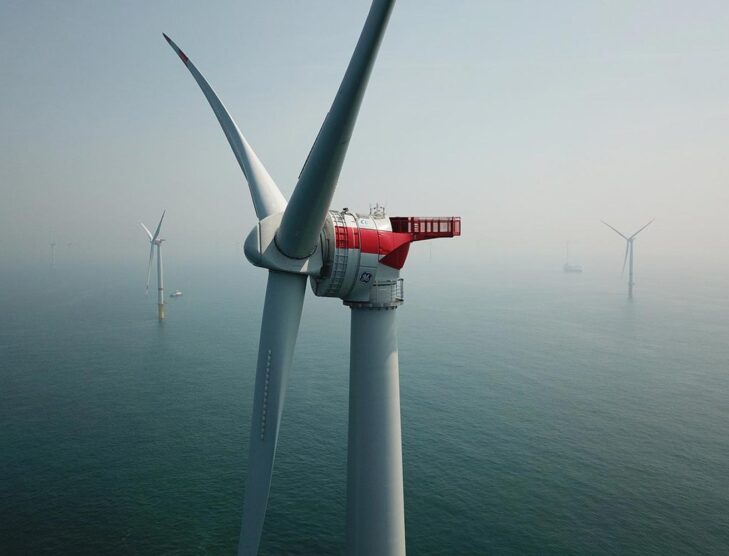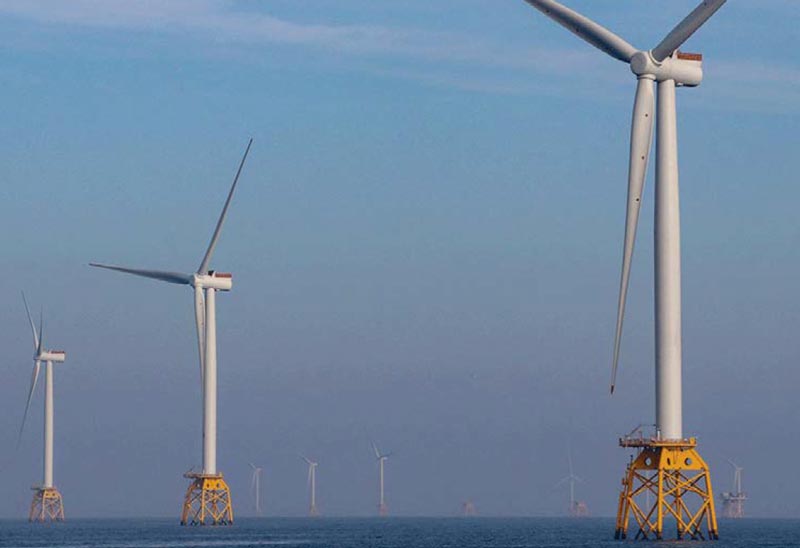
Technology innovation critical for offshore wind growth
Wind and solar PV are the heavy hitters of the renewable energy world and the most popular alternatives to fossil fuels. While solar offers a more predictable output of renewable electricity, wind is clean, free and readily available. Harnessing the power of the wind is playing an increasingly important role in delivering energy in a sustainable manner.
When it comes to the lubricant industry, wind offers greater potential. Lubrication plays a vital role in the reliability of a wind farm as massive turbines are exposed to harsh environments, extreme temperatures and exposed locations. High-performing lubricants are essential to extend the lifetime of wind assets.
An exceptional level of wind capacity additions has occurred in recent years. The Global Wind Report 2021, released by the Global Wind Energy Council before the 2021 United Nations Climate Change Conference (COP26) in November 2021, indicated that 2020 was the best year in history for the global wind industry with 93 Gigawatts (GW) of new global wind power installations, a 53% year-on-year increase. China accounted for the lion’s share (55.91%) as developers rushed to commission projects before the expiry of a local incentive scheme.
According to the report, there is now 743 GW of wind power capacity worldwide, which is dominated by onshore wind turbines. According to market and consumer data company, Statista, offshore wind energy reached approximately 34.4 GW in 2020. For reference, one GW is enough energy to power approximately 750,000 homes.
One drawback of onshore wind farms is that they can be obstructed by buildings or the landscape. Offshore wind power is more challenging and expensive than land-based engineering, however, the greater abundance and consistency of offshore wind offsets these difficulties. Offshore wind turbines are typically exposed to stronger, steadier winds and produce higher and more reliable electricity.

The offshore wind industry is booming and the tailwinds that are fuelling its growth are not expected to subside any time soon. The International Renewable Energy Agency (IRENA) expects offshore wind costs will fall by 55% by 2030. GE Renewable Energy says offshore wind is expected to make up 15% of the total wind industry by 2025. There is also increasing interest in using offshore wind to produce clean hydrogen.
In the United States, offshore faced headwinds for more than a decade in the form of stakeholder opposition, regulatory frameworks and unfavourable energy markets. As of 2021, only two offshore wind projects were operational in U.S. waters with a total of seven turbines. Falling offshore wind prices, federal action and state-level commitments have seen significant developments in the past two years.
The Offshore Wind Market Report: 2021 Edition, produced by researchers at the U.S. Department of Energy (DOE) and the National Renewable Energy Laboratory (NREL), indicated that the U.S. offshore wind pipeline grew by 24% in 2020-21 with 36 GW in various stages of development. The industry has also welcomed support from the Biden administration who, in March 2021, set the first national goal for offshore wind with a target of 30 GW by 2030. Today, there is offshore wind activity on all U.S. coasts.
Europe has a far more advanced offshore wind industry with 5,400 turbines in the water across 12 countries, and an overall generation capacity of more than 25 GW. In April, TotalEnergies and KGHM, a major Polish state-owned group, signed a partnership to participate on a 50-50 basis in the Polish government tender to develop offshore wind projects. The government has launched a new auction scheme covering 11 areas in the Polish Baltic Sea, representing an expected total capacity of more than 10 GW, in order to leverage the Baltic Sea’s strong potential for wind power generation.
Meanwhile, China activated almost 17 GW of offshore wind capacity in 2021 and now accounts for almost half of the world’s installed offshore wind power, according to data from China’s National Energy Administration.
Wind turbines offer an unlimited local resource and an excellent domestic source of sustainable energy. However, offshore wind power brings with it inherent challenges, many of which are being addressed through global research and development projects. Common challenges include corrosion, fatigue, erosion, lightning strikes and biofouling.
In February 2022, GE Renewable Energy and GE Research were awarded two offshore wind grants by the National Offshore Wind Research & Development Consortium. The Consortium is a not-for-profit public-private partnership focused on advancing offshore wind technology in the United States.
In a statement, Christy Guthman, general manager of sales and commercial operations in North America, said that the awards reinforced the critical role that technology innovation will play in tapping the full potential of offshore wind in the U.S. The Consortium, funded in part by U.S. DOE and the New York State Energy Research and Development Authority (NYSERDA), supports research that will accelerate the fast-growing U.S. offshore wind sector.
The award presented to GE Renewable Energy was for the project “Weld Assembly of Large Castings.” The funding will assist in the research of a robust joining process for large iron castings, the key structural element in wind turbines, and research will include a “multi-fidelity modelling framework for splitting and welding offshore wind castings.” Currently, only a limited number of foundries have expertise in the creation of offshore wind castings. GE believes the advancement of this specialist capability will accelerate job growth and create a more robust U.S. supply chain.
Inspection of offshore wind turbines is essential in maintaining operational efficiency; however, it is a time consuming and difficult undertaking. A second grant was awarded to GE Research to contribute to a feasibility study on the use of an Autonomous Inspection Vessel (AIV). The autonomous vessel includes a multi-sensing system that enables the inspection and monitoring of fleets of offshore wind turbines with minimal to no operational interruption. Visible-range cameras can be controlled remotely via satellite with GE indicating that the technology will reduce inspection costs, minimise turbine downtime and enhance workplace safety.
With over 49,000 units installed in more than 35 countries, GE Renewable Energy is one of the world’s leading wind turbine suppliers. GE’s Haliade-X turbine is the industry’s first 14 megawatts (MW) offshore wind turbine. The Haliade-X features a 220-metre rotor, a 107-metre blade, and digital capabilities. GE suggests this makes it less sensitive to wind speed variations and boosts predictability.
The company is well-positioned to support the growth of the U.S. offshore wind market through technology innovation. GE has been selected to support multiple offshore projects including the first utility-scale offshore wind installation in the U.S., Vineyard Wind—an 800 MW offshore wind farm that will power the equivalent of 400,000 U.S. homes and businesses—and projects in Maryland and New Jersey. These installations form part of GE’s global offshore wind project pipeline of more than 7.4 GW.







